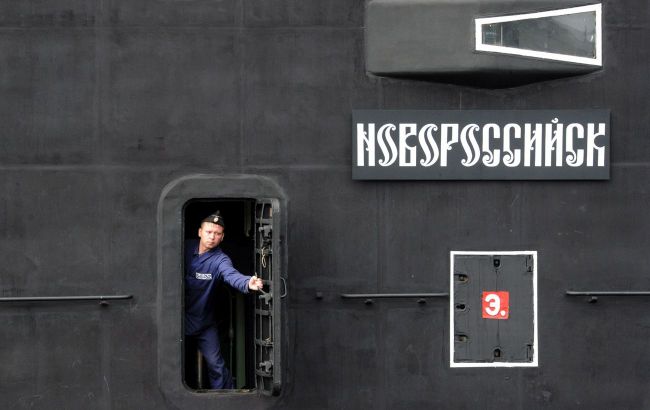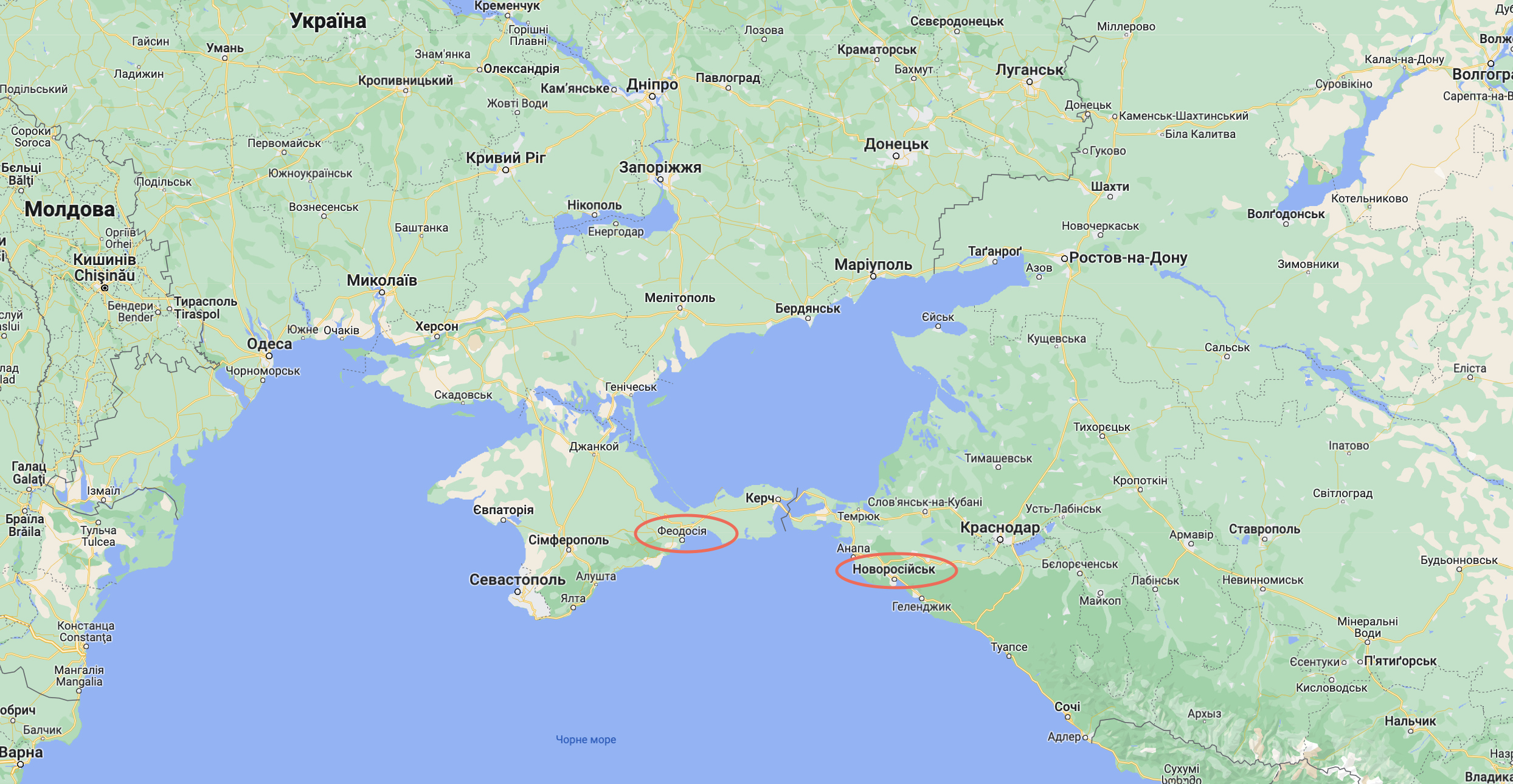Maritime drones and explosions rock Novorossiysk and Feodosia - details
 Attack on Novorossiysk reveals that it is not their deep rear line anymore (Photo: Getty Images)
Attack on Novorossiysk reveals that it is not their deep rear line anymore (Photo: Getty Images)
In the early hours of August 4th, an attack involving maritime drones struck the port city of Novorossiysk, resulting in the sinking of the amphibious ship "Olenegorsky Gornyak." A similar disturbance also unfolded in Feodosia, Crimea, where reports suggest that the occupant's air defense systems engaged against drones.
RBC-Ukraine has compiled the available information on an explosive night for the Russian occupying forces in what seemed to be deep within their rear lines.
 Photo: Feodosia and Novorossiysk on the map (google.com.ua/maps)
Photo: Feodosia and Novorossiysk on the map (google.com.ua/maps)
Maritime drone attack on Novorossiysk
Initial reports about the explosions in Novorossiysk, Krasnodar Krai, started appearing on Russian Telegram channels around 1 a.m.
The first explosions occurred near the Southern Ozerievka region, where the Caspian Pipeline Consortium's (CPC) maritime terminal is situated. Witnesses claimed to have seen "bright flashes over the sea and explosions in the vicinity of the CPC."
According to unconfirmed data, maritime drones seemingly targeted the so-called "oil beacon." This remote oil reception system in the sea is located several kilometers away from the shore.
CPC has an oil terminal near Novorossiysk. However, as reported by Russian media, the company's press service affirmed that the "terminal remains undamaged and continues to load oil onto moored tankers."
Subsequently, as dawn approached, residents began reporting new explosions and sounds of gunfire over the sea. According to Russian Telegram channels, the explosions in the water and gunfire were heard in Myskhako in Novorossiysk.
"Witnesses reported gunfire and explosions in Myskhako, Novorossiysk, possibly indicating an attack by maritime drones," they said.
After a wave of panic and local confusion about the ongoing events, the Russian Ministry of Defense provided its version of events. They stated that an attempt to attack the naval base in Novorossiysk was made by two unmanned maritime vessels. In the traditional fashion, Defense Minister Shoigu announced that the attack was "repelled," blaming Ukraine for the incident.
"During the repulsion of the attack, unmanned vessels were visually detected and destroyed by fire from the standard armament of Russian ships guarding the naval base's outer roads," asserted the Russian Ministry of Defense. They added that the unmanned vessels were allegedly eliminated in the vicinity of the village of Myskhako.
Novorossiysk Mayor Andrey Kravchenko also weighed in on the situation, stating that the attack on the naval base was successfully repelled by the crews of the ships "Olenegorsky Gornyak" and "Suvorovets."
Despite Russian claims of a successful "repulsion," they have already imposed a temporary ban on vessel movement in the port of Novorossiysk.
Struck ship in Novorossiysk
However, as later revelations have shown, the Russian account of the successful repulsion of the attack in Novorossiysk wasn't as accurate as initially presented. Footage began circulating online featuring a major Russian naval vessel, the "Olenegorsky Gornyak," badly damaged and listing to the side. The first to share the video was one of Russia's self-styled "war correspondents," who reported that one of the compartments on the ship had been flooded, causing it to capsize.
This pertained to the vessel in question, the "Olenegorsky Gornyak," which was being towed to the shore following the attack.
Later, sources disclosed that in conjunction with the Ukrainian Navy, a successful special operation had taken place, during which a major Russian amphibious ship, the "Olenegorsky Gornyak," was targeted in Novorossiysk.
"As a result of the attack, the 'Olenegorsky Gornyak' sustained a significant breach and is currently unable to perform its combat duties. Therefore, all claims made by the Russians about a 'repelled attack' are false," the Security Service of Ukraine (SBU) stated in a comment to the publication.
In the video, an above-water drone operated by the SBU can be seen, loaded with 450 kilograms of TNT, launching an attack on the enemy vessel with approximately 100 crew members onboard.
Explosions in Feodosia
The night was also eventful in temporarily occupied Crimea. Explosions rocked Feodosia. Local Telegram channels widely disseminated videos online, supposedly showcasing the work of the occupant's air defense systems.
According to unconfirmed reports, drones could have targeted an oil depot in the city. To corroborate this, certain online outlets shared videos of a fire. However, as reported by the "Crimean Wind" Telegram channel, no fire occurred at the oil depot due to an explosion.
Moreover, it was reported that after the explosions in Feodosia, there were power outages in certain areas, along with internet connectivity issues.
As for the response from the "authorities" themselves, the occupant forces, as is their tradition, assert that the attempt to attack by drones was "successfully repelled."
Specifically, Oleg Kryuchkov, an advisor to the Crimea's "governor," claimed an attack by 13 drones that were "neutralized by air defense systems." According to his statement, 10 UAVs were destroyed, and three others were "brought down" using electronic warfare means.
According to the Russian version of events, there were no damages or casualties.

